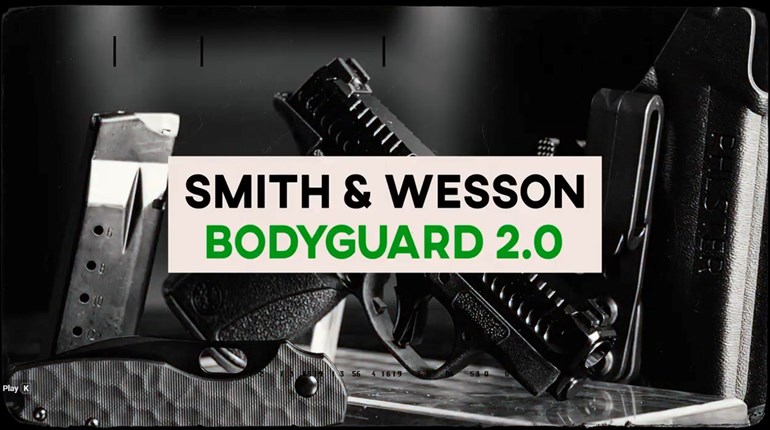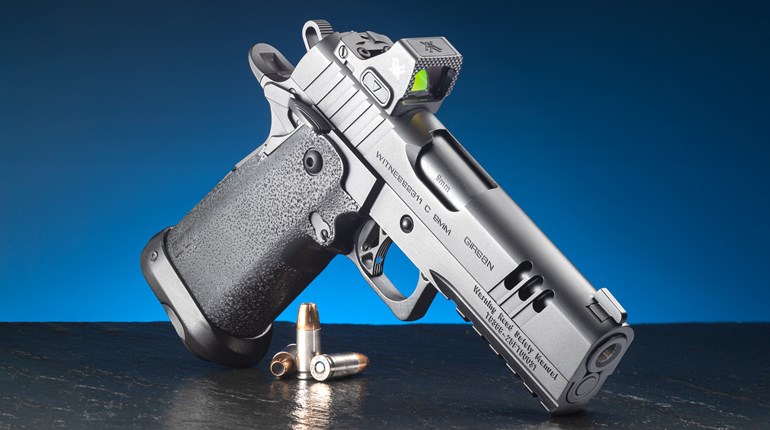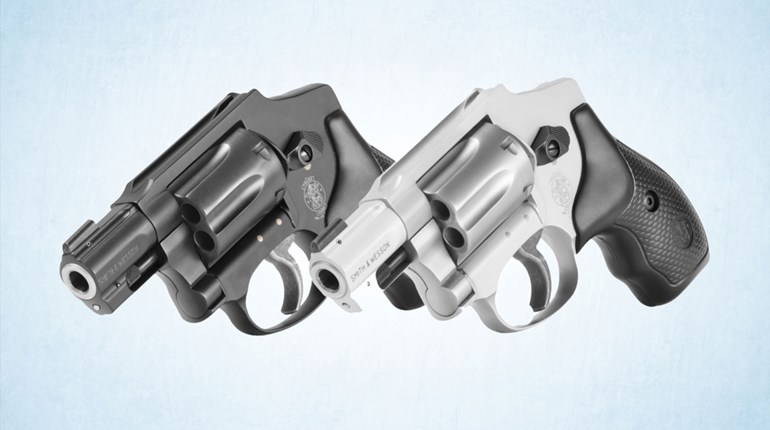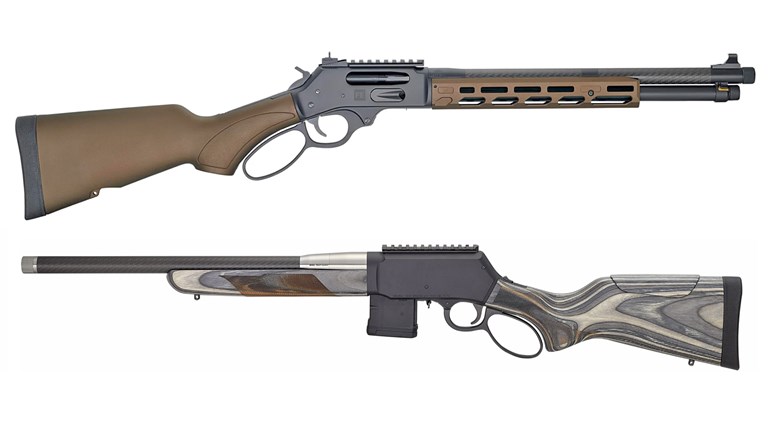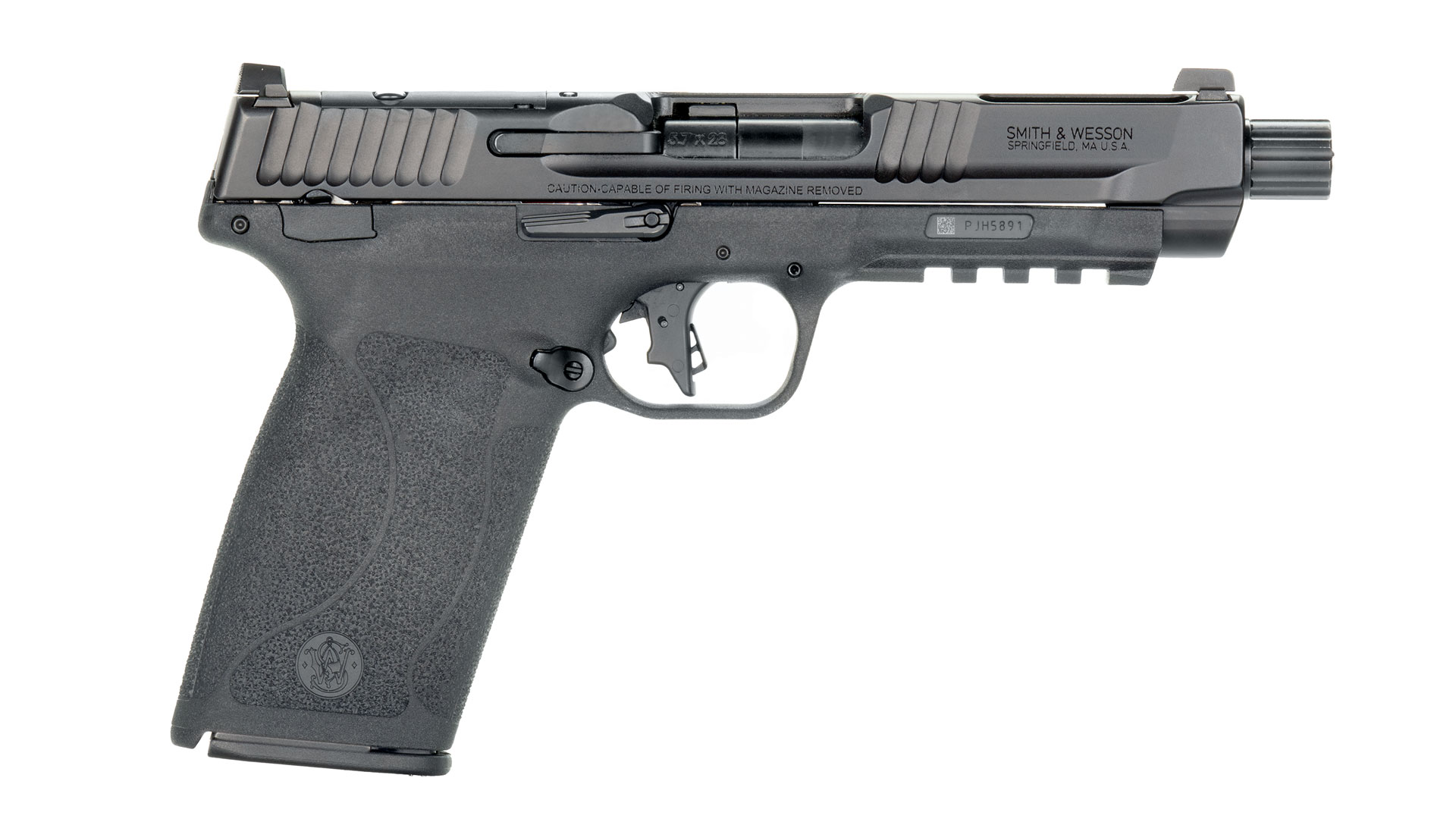
The 5.7x28 mm cartridge, designed by Fabrique Nationale to meet a NATO specification for a personal-defense-weapon cartridge capable of defeating the body armor of Soviet paratroopers in the waning days of the Cold War, was moribund for the last decade or so of the previous century.
In an attempt to keep the cartridge alive (and hopefully recoup its design bucks) FN spun off a semi-automatic derivative of its P90 full-automatic PDW. Sold as a semi-auto variant on the U.S. market as the 16-inch-barreled PS90, this carbine was accompanied by a pistol dubbed the FN Five-seveN. While it enjoyed some limited adoption by law enforcement agencies—including a high-profile U.S. Secret Service contract—the Five-seveN was very much a niche product. The cartridge was dormant for years, supported by the FN PS90 and Five-seveN, as well as the occasional weirdo AR-15 upper. And then came Ruger.
Ruger’s 5.7 pistol was, similar to the FN Five-seveN, a mechanically delayed blowback firearm. More importantly, it stickered for several hundred bucks less than the Five-seveN’s MSRP.
Now Major Player Three has entered the game. Smith & Wesson dropped its new 5.7x28 mm pistol—dubbed the M&P 5.7—at SHOT Show 2023 to a bit of fanfare.
The new pistol fits well in Smith’s M&P handgun lineup, which has come to envelop most every polymer pistol the company makes with any hint of tacticool pretenses. Its overall lines and styling cues leave no doubt as to who makes it, and its dimensions leave it looking like someone dropped a regular M&P9 into a taffy-pulling machine.
At first glance, the M&P 5.7 bears a superficial resemblance to the FN and Ruger offerings. The grip is of normal length for a service-size semi-auto, albeit elongated slightly front-to-rear, and the slide is noticeably lengthened to accommodate a longer barrel, the better to eke more muzzle velocity from a cartridge whose forte is, speed.

The barrel length is a full 5 inches, a fraction of an inch longer than its big-name competitors, but looks even longer due to the protruding thread protector covering 1/2x28 tpi threads for attaching sound suppressors or muzzle devices (more on that later). The top of the slide features dovetailed sights front and rear that come in a three-dot configuration from the factory. The slide top between them is milled flat and longitudinally serrated to reduce glare. Up front, just abaft of the front sight and straddling the serrated sighting surface, are a pair of long “speed holes” in the slide to reduce reciprocating mass.
The sides of the slide feature the scallop cut of the M&P series that goes downward behind the ejection port before swooping forward to slice downward again just behind the muzzle. There’s no mistaking this pistol for anything other than an M&P. There are nine pairs of angled grasping grooves at the rear of the slide and another four matching pairs forward of the ejection port; this slide has lots of places to grab it to chamber a round or clear a malfunction.
The frame features texturing and styling that also clearly establish it as part of the M&P family. Alas, if you’re a fan of the interchangeable backstraps on the classic M&P9, they are absent, an unavoidable casualty of the pistol’s lengthened mags. The pistol features ambidextrous slide releases and, if you order the variant with manual thumb safeties, those come on both sides of the frame as well. The port-side slide release doubles as the takedown lever.
To fieldstrip the pistol, doubly ensure it’s clear, withdraw the slide just far enough for the indicator on the slide release to peek through the takedown notch in the slide and then use a punch or a ballpoint pen or a similar tool to press on the axle of the slide stop on the right side. It only takes a little poke to get it started and then you can pluck it out from the left with your fingers. Yank the slide off the front of the gun, carefully remove the recoil-spring assembly (it’s a captive spring) and lift out the barrel assembly. We say “barrel assembly” because that cool thing protruding from the front of the slide with a thread protector on it is just a sleeve. The actual barrel is inside that and is the key to a unique operating mechanism.
Smith calls it the “TEMPO” operating system, but it is really a classic gas-operated, locked-breech operation, except the barrel itself is the op rod and piston. When you have the barrel out of the sleeve, you notice there are six radial fins on the barrel that act as piston rings, three skinny ones out by the muzzle and three fatter ones toward the breech. There’s also a gas port out toward the muzzle end of the barrel. When the bullet passes this port, gas passes back into the space between the barrel and the sleeve, driving the barrel rearward until it meets a lug in the frame which causes it to rotate through 90 degrees, unlocking it from the slide.
Like most 5.7x28 pistols, the M&P is accurate. On the other hand, the gas operation does have a penalty as our test sample would not function reliably with the high-velocity 27-grain lead-free FN loads. However, it functioned quite reliably with 40-grain SS197SR Hornady V-Max and American Eagle 40-grain FMJ, provided one loaded the magazines with care. The metal 22-round mags worked great if loaded carefully or held to no more than 15 rounds. If loaded to capacity, make sure the rounds are loaded so they don’t drag the noses of the rounds on the front of the mag body.
Smith & Wesson’s new M&P 5.7 combines the firm’s history of customer support with a novel operating mechanism, a crisp 3-pound, 8 ounce trigger, an MSRP a hundred bucks south of the Ruger, all in a size that could be carried in an IWB holster.
It will be interesting to see how it performs in the marketplace.













